All About The Schwa Sound & FREE Anchor Charts
This post may contain affiliate links, and I will earn a commission if you purchase through these links. Please read the disclosure policy for more details.
Did you know that the schwa sound is the most common vowel sound in the English language? And despite this, it is a tricky sound to teach, especially when it comes to spelling.
In this post, I break down the schwa sound so you can confidently teach your students all about the schwa!
Grab 12 FREE phonics word lists & anchor charts by subscribing to my list!
*Most school spam filters block my emails, so please use a personal email.

What is a schwa?

The schwa is an unstressed vowel and it can be spelled with any vowel. For example, the word banana has 2 schwa sounds – the first and last A both make the schwa sound. This is because the /nan/ part of the word is stressed, which I’ll explain later.
The schwa symbol looks like an upside down e (ə) and sounds like a soft short U (/uh/) or short I (/ĭ/).

The Lazy Vowel
The schwa is also known as the lazy vowel because your mouth barely has to open to make the sound, and it’s a weak sound. In some words, it’s so weak we barely hear it, such as in the words ‘interest’ and ‘chocolate’.
Dialect
Dialect can often affect how a word is pronounced. Take for example the /er/ ending pronounced in an American dialect versus an Australian dialect. The /er/ will sound like a schwa in the Australian accent.

Unstressed Syllables
The schwa sound is found in unstressed, or unaccented, syllables. Since we only stress one syllable in multi-syllable words, that’s the one that would have a schwa sound.
Teaching stressed and unstressed syllables should be taught to upper elementary students, but it’s good information for you to have as a teacher if you teach younger students, and to offer to inquisitive or advanced students.
The English language is a stress-timed language. This means that some words and syllables take longer to say than others. These are referred to as stressed or accented.
The words that communicate the most essential parts of a message (nouns, main verbs, adjectives, and adverbs) are stressed in an English sentence. Function words, such as pronouns, articles, and conjunctions, are usually not stressed.
For example, consider the sentence: The boy is mad. Notice how boy and mad are stressed and sound different.
Words with more than one syllable will have stressed and unstressed syllables, as in the word mir/a/cle.
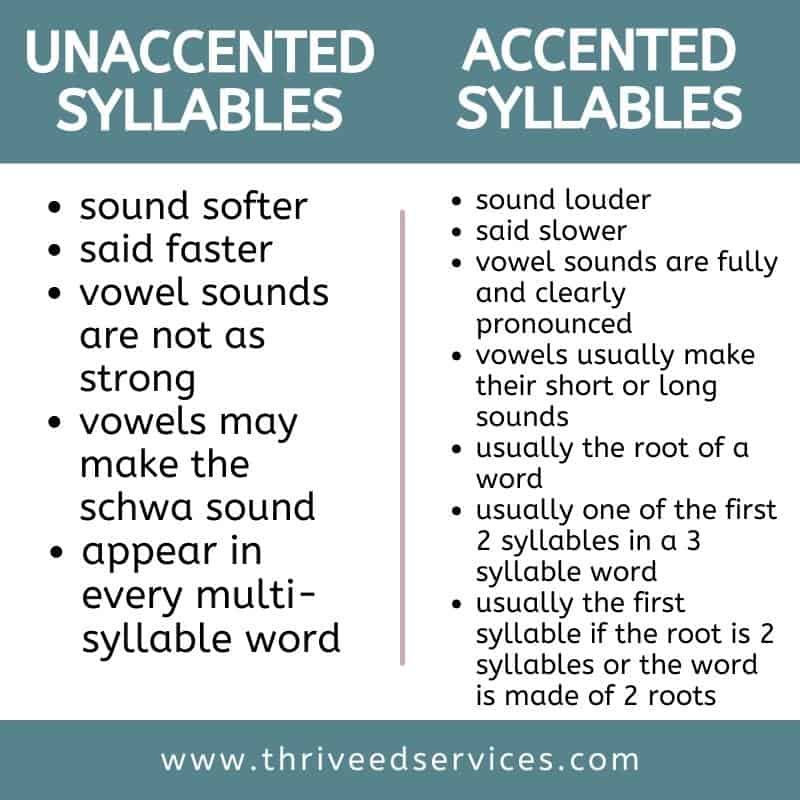
An unstressed syllable is the opposite of a stressed syllable and is one that contains a weak vowel, like the schwa. These syllables are weaker sounding, while the stressed syllable is louder. Unstressed syllables are also said faster.
Say the word mir/a/cle out loud and you can hear which syllables are stressed and unstressed.
There are also some words that have 2 meanings, depending on which syllable is stressed. In these words, it’s easier to hear the difference: con/vict or con/vict.

Accenting Patterns
There are 3 common accenting patterns in words with more than one syllable:
- Accent the root of a word, not the prefix or suffix: jump/ing
- If the root word has 2 syllables, we usually accent the first syllable: tel/e/phone
- Words with 3 or more syllables that end in a silent-e syllable usually have one syllable between the accented syllable and the silent-e syllable: con/tam/i/nate
Scribal O
Ever heard of the scribal O? Until a few years ago I had not. Here’s a quick summary:
Back in the old days, scribes used to write everything since they were the people who knew how to read and write. Because they used to write in script and cursive, the letter U sometimes blended in with the following letter and caused lots of confusion. So they started using an O in place of the U to make it easier to read. This is why some words spelled with an O have that schwa sound: love, come.
This is a great story I share with my students to help explain why some words are spelled with an O when they sound like a schwa.

Schwa Sound Words
If you’re looking for a handy list of words with schwa sound you can use in your lessons, I created a schwa sound words list that you can download for free by signing up below.
Grab 12 FREE phonics word lists & anchor charts by subscribing to my list!
*Most school spam filters block my emails, so please use a personal email.

How To Teach The Schwa Sound
Once students are working on two-syllable words, you can introduce the schwa.
Introducing the Schwa Sound
When introducing the schwa sound, it’s helpful for students to understand the difference between stressed and unstressed syllables. Ask them to say a word like ‘content’ by stressing the first syllable, and then say it again stressing the second syllable, so they can tell the difference. They need to have something concrete or they may not understand what stressed means.
Accenting Syllables
Explain to students that if they read a word using both the short and long vowel sounds and it doesn’t sound familiar, they can try swapping out a vowel with a schwa until it sounds like a word they know. The schwa is more often in the second syllable so they can try that one first.
Since most students know more words than they can read, this usually works. If not, they can use a dictionary to check. It’s important for them to know the symbols of accented syllables and the schwa.
Schwa Patterns
The schwa sound tends to appear in a few common places. Here are a few patterns you can teach students:
- The letter A at the beginning and end of a multi-syllable words is often a schwa
- The vowel before the letters L and N in the final syllable of a multi-syllable word is often a schwa

Teach similar schwa words in groups
Group together schwa words that are spelled similarly, or that have a common pattern.
For example, you can teach all the words with -al together: i.e. practical, animal, and general.
You can also teach them by patterns you see in vowel representations. One example is the letter A which often has a schwa sound at the beginning of words like about, again, and alarm.
For help with spelling, think of related words
It benefits students to know roots and affixes so they can spot the base or root word and determine if the word is related to another.
For example, the word definition has a schwa sound. One trick to know that this schwa is spelled with an I is because it’s related to the word define.
Repeated Exposure & Tools
Ultimately it comes down to lots of practice and exposure, so students eventually remember the spelling of each word. There aren’t any tricks or rules when it comes to how the schwa is spelled, so students will need lots of practice and exposure.
Be sure to teach students how to use tools such as dictionaries and spell checkers. Students should know the symbols for the schwa sound and accented syllables so they can use dictionaries as a reference tool on their own.
Schwa Sound Activities
These activities help to promote awareness of the different representations of the schwa. Use these to build on this but don’t expect students to remember how to spell all these words just because they did an activity on it. Remember, lots of exposure and practice over years is what develops their orthographic mapping for the different representations of schwa, and many of these concepts are more advanced.
Spot the Schwa
Go on a schwa hunt by looking for words with a schwa sound. You can have students highlight words in a paragraph or just the schwa sound in different words.
Pictured below is a passage that a student highlighted all the schwa sounds she could find.

Word Sorts
Sort words based on the vowel used or a spelling pattern like -tion.
You can even display some schwa words in these groups that you created when sorting. I have heard of a ‘schwa wall’ similar to a word wall or sound wall. If you have the space for it you can go adding words to the wall throughout the year. If you don’t have the space you can use a sheet of paper to create a personal schwa wall that each student keeps in a folder and adds to it themselves.
Below you can see an activity where I had the student sort the schwa words she had found in the passage.
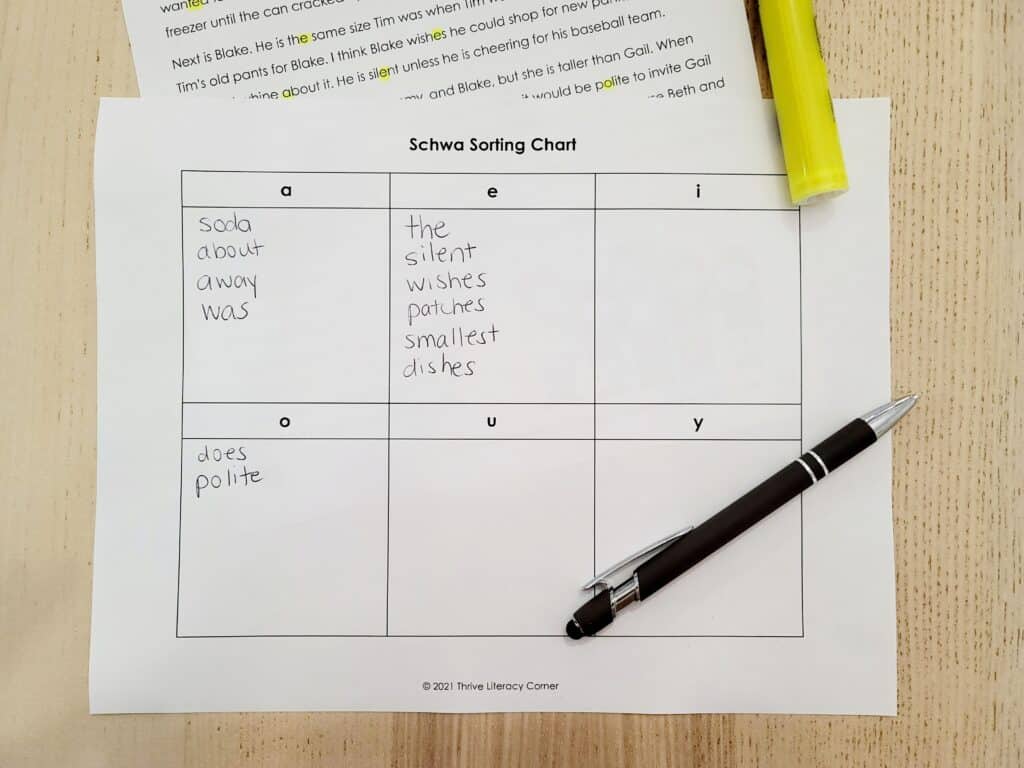
Robot Voice
Have you ever noticed how a robot voice usually doesn’t stress any words or syllables? Students can pretend to be robots and read words or phrases in a robot voice to help them hear the difference.
Ask them to read a word the way it’s spelled, meaning the vowels should all make a short or long sound. For example, tell them to say ‘camel’ this way. It should be pronounced as /cam/ – /el/ instead of /cam/ – /uhl/. This way they can hear exactly where the schwa should be, and they will probably giggle at how funny the words sound.
Dictation
After going over a group of words with a similar spelling pattern, dictate a few words or sentences for students to practice. I like to do 3-5 words and up to 3 short sentences after a lesson to keep it quick and simple.
Grab 12 FREE phonics word lists & anchor charts by subscribing to my list!
*Most school spam filters block my emails, so please use a personal email.

Conclusion
I hope this post provides the tips you need to help you teach the schwa sound. Using these activities and tools can help students become more aware of the different representations of this vowel sound. With practice, students will eventually remember how to spell all words with a schwa sound.
Sources:
- Really Great Reading
- How To Teach Spelling by Laura Toby Rudginsky and Elizabeth C. Haskell
- Keys To Literacy
Want to remember this? Save The Schwa Sound: What It Is and How To Teach It to your favorite Pinterest board!

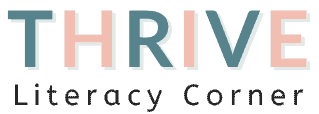

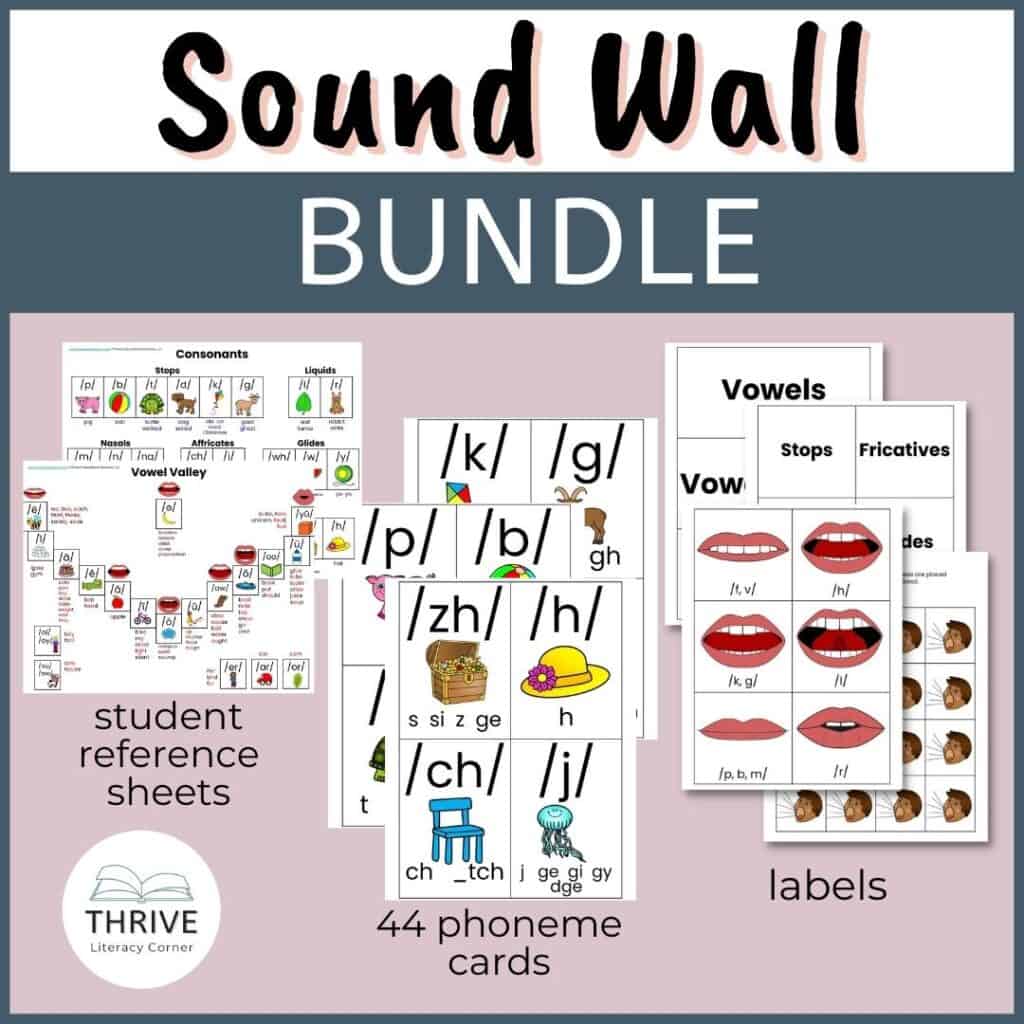
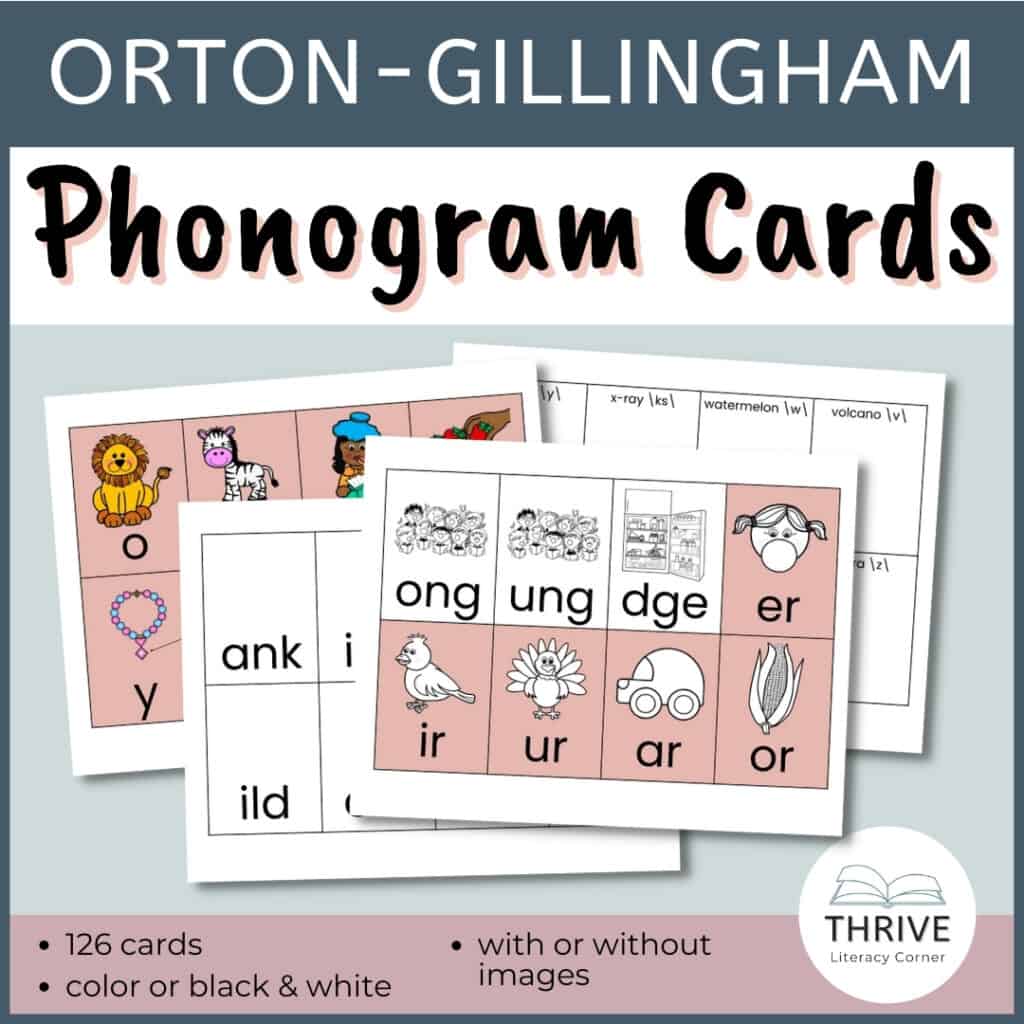
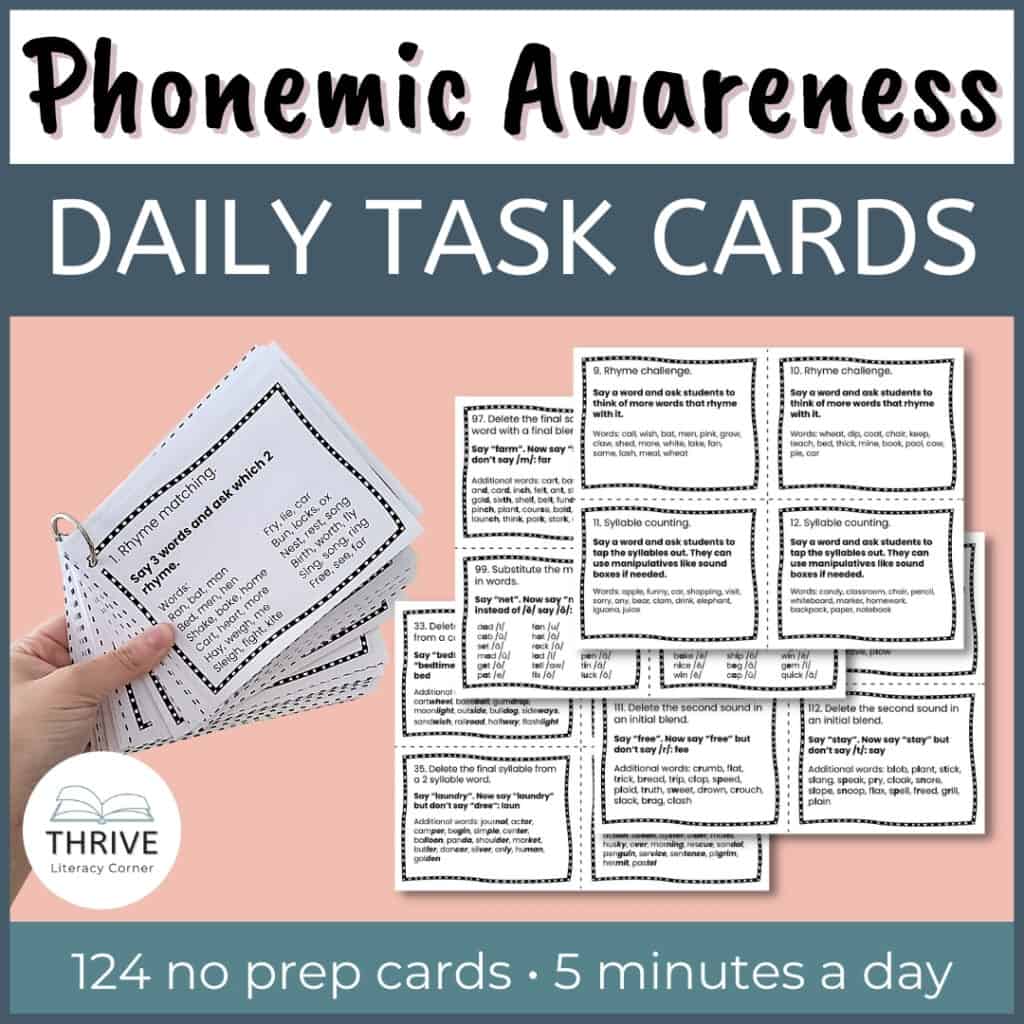
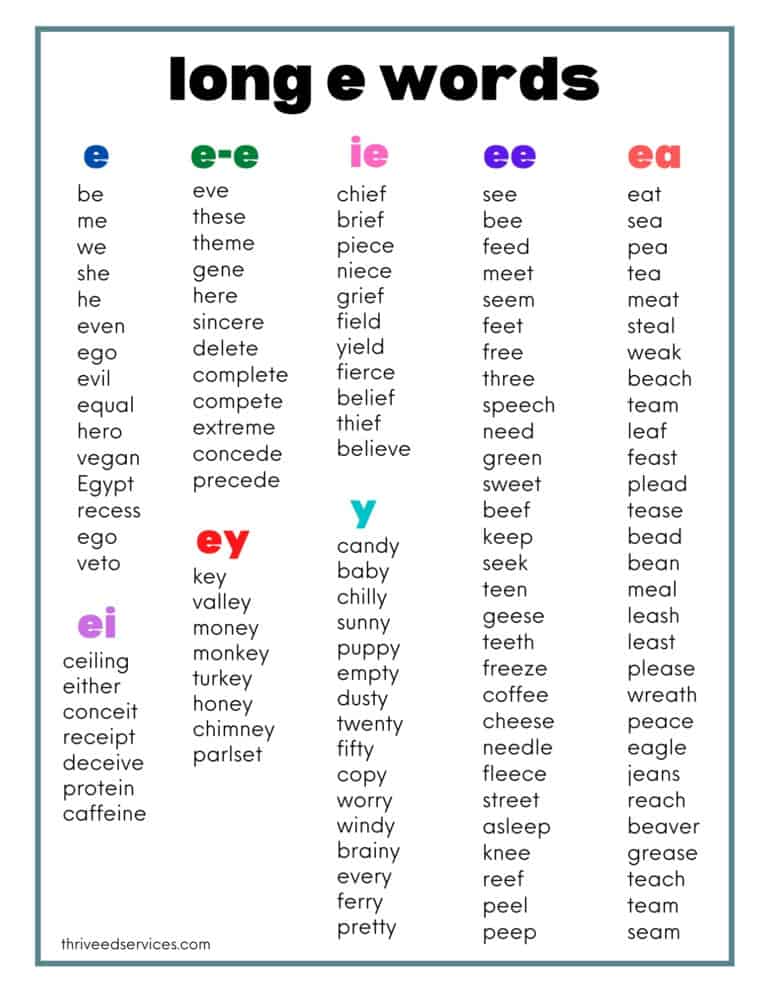
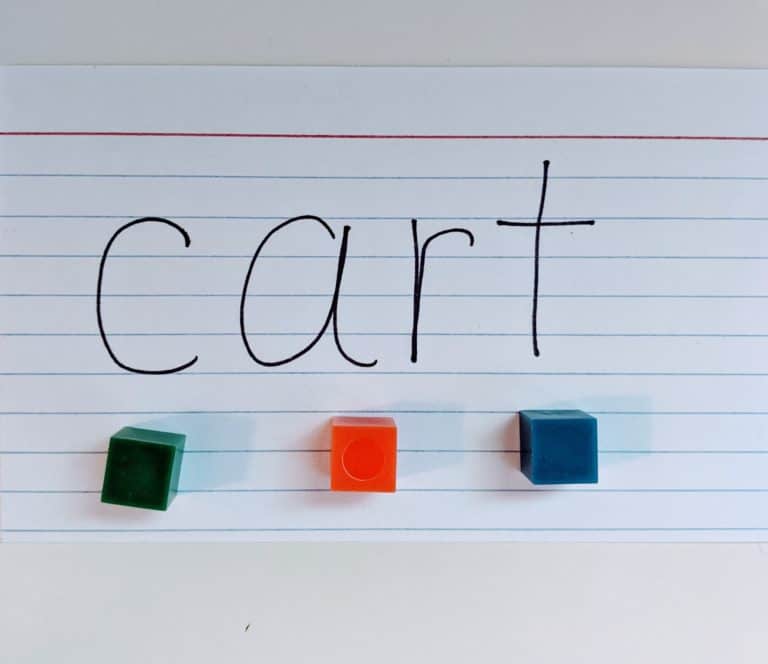
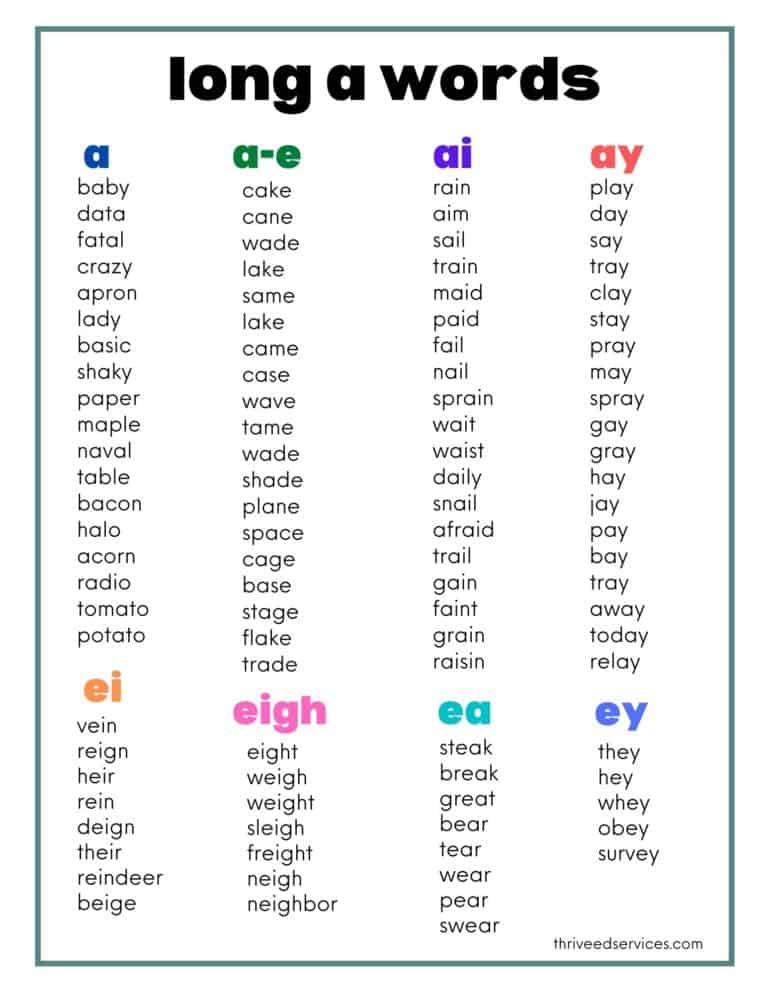
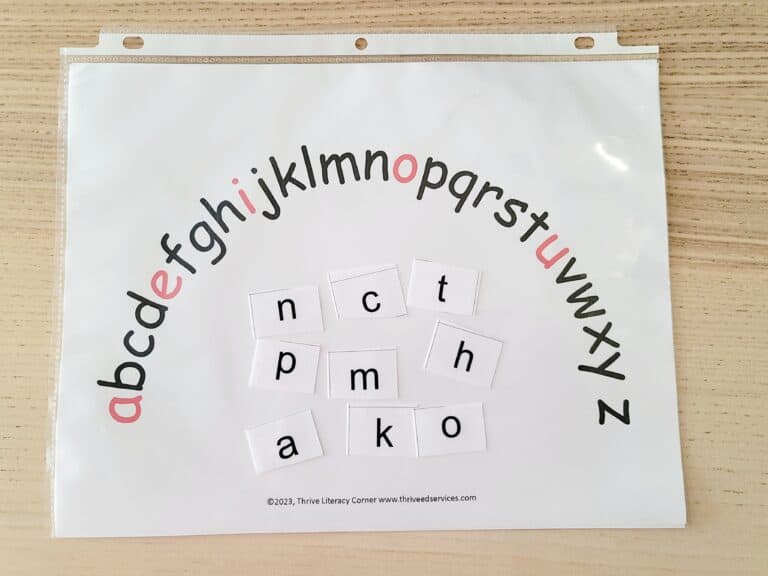
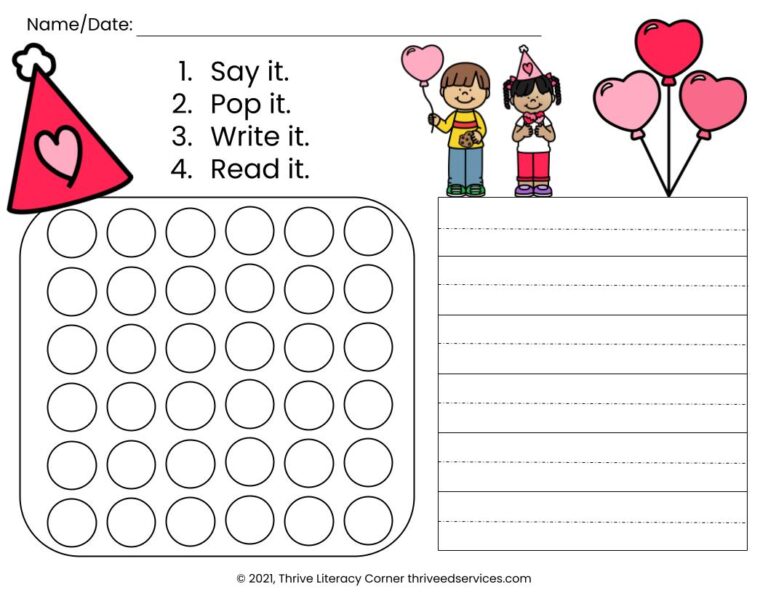

MISS DELILAH,
WISHES YOU THE BEST FINDINGS IN THE LIFELONG JOURNEY.
I LOVE YOU, AND WITH YOURS BEST EFFORTS FOR EDUCATION FOR CHILDREN, ADULTS AND FOR ENGLISH LANGUAGE FOR BETTER TO BEST TEACHINGS AND THE BEST UNDERSTANG OF ENG. LANG.
I CONGRATULATE YOU ON THIS SPECIAL PURPOSE EFFORTS.
REALLY, I APPRECIATE YOU MOST.
THANKS.
RUBAB.
The schwa is not always unstressed. It’s like any other IPA sound. Just because Americans lack the ability to distinguish between a comma and a strut doesn’t mean there isn’t a difference.